Hall Tavern Farm in Charlemont oversees once-in-a-decade forest management practice
| Published: 12-17-2023 3:34 PM |
CHARLEMONT — With a once-in-a-decade practice having been carried out, it was a noteworthy year at Jay Healy’s Hall Tavern Farm.
The roughly 350 acres owned by Healy’s family is the site of the oldest operational certified tree farm in the state. Healy, who spent a long career as a state representative and agricultural commissioner advocating for the forestry industry, and was recently honored with the Massachusetts Forest Alliance’s John H. Lambert Forest Stewardship Award, says working in forest management involves well-developed plans that take decades to see to completion.
One practice carried out at his farm that depicts this sort of long-range planning — which happened to take place this year — entails selecting a few seed pine trees and harvesting all the other trees within a 4- or 5-acre area. Healy said this practice allows hundreds of new trees to grow in their place.
“We don’t do clear-cutting,” Healy emphasized. “We leave a few seed trees.”
The farm does this because often when a forest has only large trees, new trees can’t grow below them. Forests are then left with tall, old trees and scrub brush underneath. By clearing the space out, Healy said, new pines have room to grow quickly, regenerating the woodlands for the next generation.
Pine tree observers can see this is a seeding year because there are large pods on the end of the branches that only come out about once a decade, he said.
“We took out a lot of the junk trees. In five to 10 years, this will look totally different. The new trees will be better at carbon sequestration,” Healy said, showing off one area of Hall Tavern Farm that had been almost completely harvested except for a few trees. “It is a win-win; you get good stuff growing. It is better than letting the trees slowly die.”
When trees are left alone, they do store carbon, but they can also become susceptible to root rot and other diseases. When trees begin to die and decompose, Healy argued, they release substantial amounts of carbon dioxide and other gases like methane. If old trees are cut down, they can be used for construction and continue to store carbon.
Article continues after...
Yesterday's Most Read Articles
 Political newcomer defeats Shores Ness for Deerfield Selectboard seat
Political newcomer defeats Shores Ness for Deerfield Selectboard seat
 South County Senior Center opts not to renew church lease after rift over LGBTQ program
South County Senior Center opts not to renew church lease after rift over LGBTQ program
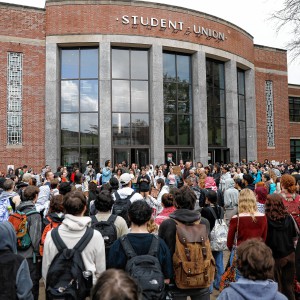 More than 130 arrested at pro-Palestinian protest at UMass
More than 130 arrested at pro-Palestinian protest at UMass
 As I See It: Between Israel and Palestine: Which side should we be on, and why?
As I See It: Between Israel and Palestine: Which side should we be on, and why?
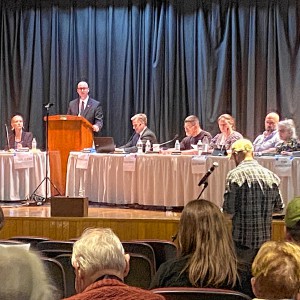 Moratoriums on large-scale solar, battery storage passed in Northfield
Moratoriums on large-scale solar, battery storage passed in Northfield
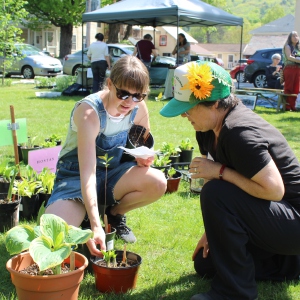 Bridge of Flowers in Shelburne Falls to open on plant sale day, May 11
Bridge of Flowers in Shelburne Falls to open on plant sale day, May 11
“We don’t do this in all 300 acres,” he clarified. “It is just a few spots.”
There are unique techniques to the practice at Hall Tavern Farm, including allowing about 50% of the sunlight to come through, so the trees grow straight up. If there is more sunlight, Healy said, the trees begin to grow more horizontally, which is not useful for lumber.
“It’s not always a question of to cut or not to cut,” Healy said. “There are many things you can do to be part of the solution [to fight climate change] rather than part of the problem. The back-and-forth arguments around forest management don’t always pick that up.”
Healy said there is a lot of pushback against forest management, and he often finds that people against it are winning. People often focus on instances of clear-cutting and empty hillsides, even if that doesn’t reflect the reality of all forest management practices, Healy said.
“The images work; it’s like atrocities of war,” Healy said. “There can be a visceral reaction, but it might not be the reality of what is going on.”
Advocates for forestry are typically not as organized or vocal, Healy pointed out, highlighting the industry’s weak spots. He explained farmers have to be good marketers to survive in today’s economy, but they may not have those skills as the world continues to change quickly around them.
The future of the industry is uncertain, but Healy hopes people in the next generation with similar values will come around and keep the family farm alive.
“The more people develop a more nuanced view of the woods,” he said, “that would be positive for everyone.”
One issue that Hall Tavern Farm recently faced was washouts from the many rainstorms in July. Although timber harvesting farms might not be what people think of when they think of a farm, Healy said he is still a farmer but on a different scale. Instead of focusing on crops that take three to seven months to mature, his “crops” take 50 to 70 years.
“You have to be an optimist when you are in this business,” he said.
Bella Levavi can be reached at 413-930-4579 or blevavi@recorder.com.

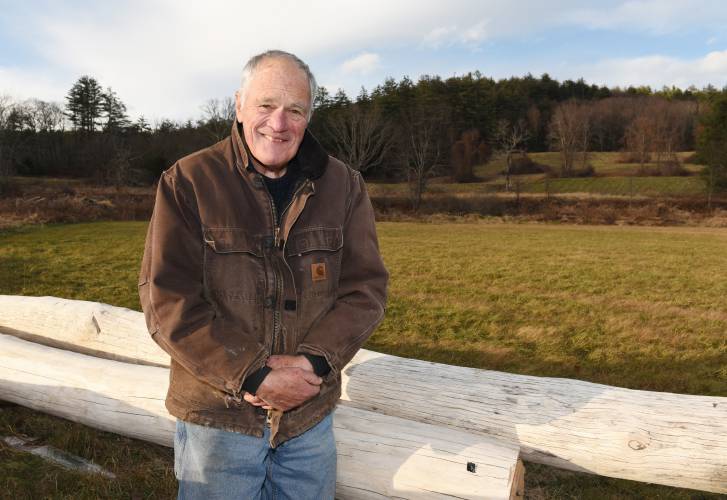

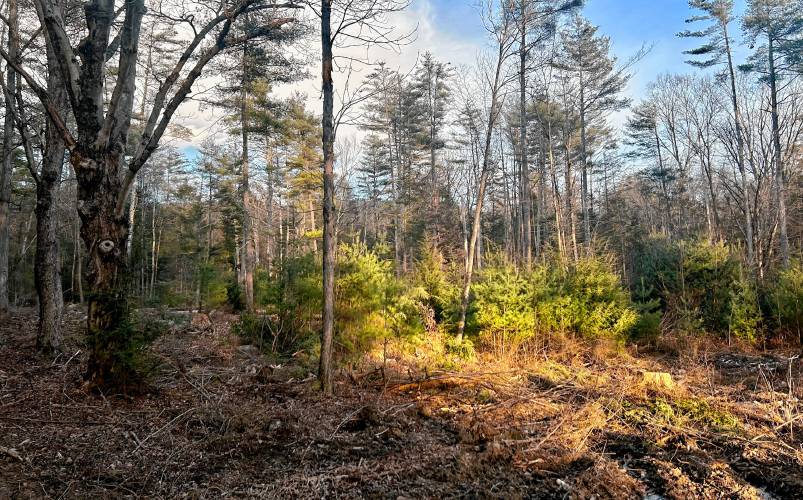
 UMass student group declares no confidence in chancellor
UMass student group declares no confidence in chancellor Four Rivers Climate Club organizes litter cleanup, panel on environmental activism
Four Rivers Climate Club organizes litter cleanup, panel on environmental activism Retired police officer, veteran opens firearms training academy in Millers Falls
Retired police officer, veteran opens firearms training academy in Millers Falls No surprises in Wendell election
No surprises in Wendell election
